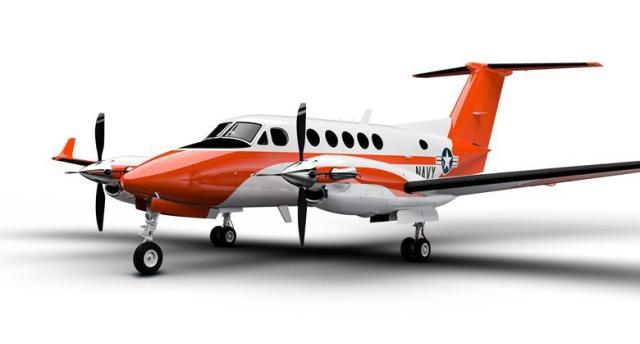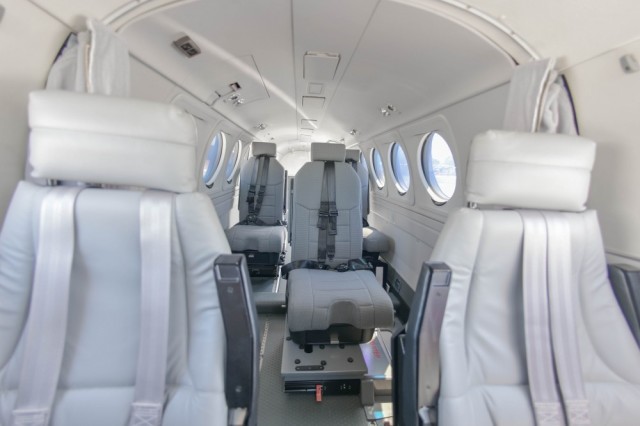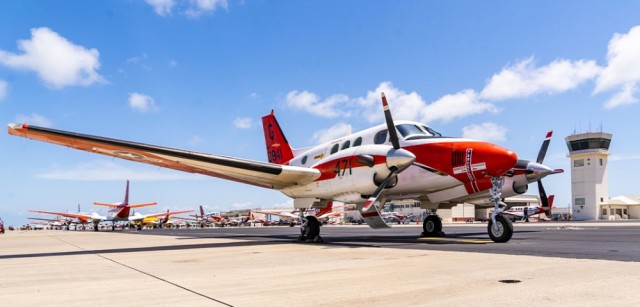On February 16, 2023, the American company Textron Aviation (a division of Textron Corporation) announced the receipt of the contract of the Naval Air Systems Command (NAVAIR) The US Navy for the supply of the US Navy aviation under the Multi-Engine Training System (METS) program of new twin-engine turboprop training aircraft Beechcraft King Air 260. This aircraft, which will be used in the US Navy aviation for the training of pilots and navigators of multi-engine aircraft, has received the American official military designation T-54A.

Image of the new Beechcraft T-54A (Beechcraft King Air 260) twin-engine training aircraft of the US Navy (c) Textron AviationThe framework contract was signed by Textron Aviation for the supply of up to 64 Beechcraft King Air 260 (T-54A) aircraft to the US Navy for a total of $ 677.2 million.
The first batch (Lot I), for which NAVAIR was awarded the first firm contract on January 25, 2023 in the amount of $ 113.1 million, includes the purchase of 10 Beechcraft King Air 260 aircraft and their corresponding support in service and training. The second and third series (Lot II and Lot III), which are in the option, provide for the purchase of up to 27 aircraft each. Deliveries of US Navy aircraft are scheduled from 2024 to 2026. The aircraft will be manufactured at Textron Aviation in Wichita, Kansas.
In the aviation of the US Navy, the Beechcraft King Air 260 aircraft, acquired under the METS program, will replace the fleet of aircraft of the same purpose T-44C Pegasus, operated since 1977. The T-44C Pegasus aircraft is a training variant of the twin-engine Beechcraft King Air 90 aircraft, that is, an early model of the same type. Now the US Navy has 56 T-44S aircraft.
The Beechcraft King Air 260 is the latest modification of the well-known Beechcraft King Air/ Super King Air family of aircraft, mass-produced since 1964. According to Textron Aviation, more than 7,700 aircraft of this family have been delivered to date, having flown more than 62 million hours. The King Air 260 was introduced by Textron Aviation in December 2020 and received an American Type Certificate (FAA) in March 2021. The aircraft is equipped with two Pratt & Whitney Canada PT6A-52 turboprop engines with a capacity of 850 hp, the Collins Aerospace Pro Line Fusion avionics complex and the Collins Aerospace Multi-Scan RTA-4112 meteorological radar, has a maximum take-off weight of 5760 kg and a regular capacity of nine passengers. The maximum flight range is 3185 km, and the maximum speed is 574 km/h.
A key improvement in the King Air 260 is the addition of a traction control that controls the power of the power plant at all stages of the flight, from takeoff to climb, in flight, descent, second-round departure and landing. The traction control reduces the pilot's efforts and prevents exceeding or lowering the speed, as well as exceeding critical values of temperature and torque. A digital pressure control system is also installed in the cabin and cabin.
In the performance of the T-54A for the US Navy, the aircraft will be equipped with a training complex with virtual and augmented reality devices that allow simulating various types of aircraft. The T-54A is also equipped with a TACAN navigation system, angle of attack sensors, military V/UHF radios, a digital audio system, engine operation monitoring devices, an additional observer seat, passenger seats and oxygen masks.


Cabin interiors of the new twin-engine Beechcraft T-54A training aircraft of the US Navy (c) Textron AviationBeechcraft T-44C Pegasus twin-engine training aircraft (Beechcraft King Air 90) of the US Navy aviation, for which Beechcraft T-54A (Beechcraft King Air 260) (c) Pawel Puczko aircraft have been ordered to replace / US Marine Corps

